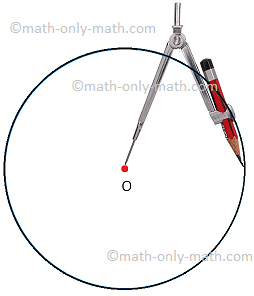Worksheet on Comparison between Rational Numbers
Comparison of rational numbers or fractions can be easily done by following some steps as mentioned below:
1. A positive integer is always greater than zero.
2. A negative integer is always less than zero.
3. A positive integer is always greater than a negative integer.
4. In case of fractions, remember to make the denominator of the fraction to be positive. If not, make it positive by multiplying both numerator and denominator by (-1).
5. For like fractions (i.e., same denominators) comparison is just done by comparing the numerators of the fractions and the one having higher numerator will be greater of the two fractions.
6. For unlike fractions (i.e., different denominators) first of all denominators are made same by taking the L.C.M. of the denominators and then comparing them as in case of like fractions.
Based on above mentioned steps try to solve some questions:
1. (i) Compare \(\frac{2}{3}\) and \(\frac{7}{3}\).
(ii) Compare \(\frac{4}{5}\) and \(\frac{3}{-5}\)
(iii) Compare \(\frac{8}{11}\) and \(\frac{9}{22}\).
(iv) Compare \(\frac{-23}{45}\) and \(\frac{-3}{9}\).
(v) Compare \(\frac{13}{-24}\) and \(\frac{9}{-4}\)
2. Arrange the following in ascending order:
(i) \(\frac{2}{5}\), \(\frac{6}{5}\), \(\frac{1}{5}\), \(\frac{13}{5}\), \(\frac{9}{5}\).
(ii) \(\frac{19}{25}\), \(\frac{16}{25}\), \(\frac{27}{25}\), \(\frac{7}{5}\).
(iii) \(\frac{-2}{9}\), \(\frac{11}{3}\), \(\frac{-3}{27}\), \(\frac{13}{-9}\).
(iv) \(\frac{4}{5}\), \(\frac{6}{16}\), \(\frac{9}{20}\), \(\frac{13}{5}\).
(v) \(\frac{-21}{105}\), \(\frac{12}{21}\), \(\frac{16}{5}\), \(\frac{20}{105}\).
3. Arrange the following in descending order:
(i) \(\frac{7}{16}\), \(\frac{9}{16}\), \(\frac{21}{16}\), \(\frac{12}{16}\)
(ii) \(\frac{3}{17}\), \(\frac{12}{17}\), \(\frac{21}{34}\), \(\frac{13}{-34}\)
(iii) \(\frac{5}{15}\), \(\frac{-16}{40}\), \(\frac{24}{5}\), \(\frac{18}{-25}\)
(iv) \(\frac{14}{21}\), \(\frac{1}{7}\), \(\frac{-17}{21}\), \(\frac{-19}{21}\)
4. Aman and Suraj are taxi drivers. Aman started his journey at 8:30 a.m. and stopped at 9:30 a.m. by covering a distance of 20 km. on the other hand, Suraj travelled 50 km in 2 hours. Assuming that they travel at constant speed, compare the distances travelled by them in first hour of their journey.
5. Find the largest and the smallest rational numbers among the following.
(i) \(\frac{4}{7}\), - \(\frac{4}{7}\) and - \(\frac{7}{15}\)
(ii) 0, - \(\frac{5}{6}\), \(\frac{2}{3}\) and \(\frac{- 13}{14}\)
6. (i) Arrange \(\frac{3}{5}\), - \(\frac{2}{3}\), - \(\frac{4}{5}\) and \(\frac{5}{6}\) in ascending order.
(ii) Write - \(\frac{10}{9}\), \(\frac{2}{9}\), \(\frac{5}{12}\) and \(\frac{7}{18}\) in descending order.
Solutions:
1. (i) \(\frac{7}{3}\) > \(\frac{2}{3}\)
(ii) \(\frac{4}{5}\) > \(\frac{3}{-5}\)
(iii) \(\frac{8}{11}\) > \(\frac{9}{22}\)
(iv) \(\frac{-23}{45}\) < \(\frac{-3}{9}\)
(v) \(\frac{13}{-24}\) > \(\frac{9}{-4}\)
2. (i) \(\frac{1}{5}\), \(\frac{2}{5}\), \(\frac{6}{5}\), \(\frac{9}{5}\), \(\frac{13}{5}\).
(ii) \(\frac{16}{25}\), \(\frac{19}{25}\), \(\frac{27}{25}\), \(\frac{7}{5}\).
(iii) \(\frac{13}{-9}\), \(\frac{-2}{9}\), \(\frac{-3}{27}\), \(\frac{11}{3}\).
(iv) \(\frac{6}{16}\), \(\frac{9}{20}\), \(\frac{4}{5}\), \(\frac{13}{5}\).
(v) \(\frac{-21}{105}\), \(\frac{20}{105}\), \(\frac{12}{21}\), \(\frac{16}{5}\).
3. (i) \(\frac{21}{16}\), \(\frac{12}{16}\), \(\frac{9}{16}\), \(\frac{7}{16}\).
(ii) \(\frac{12}{17}\), \(\frac{21}{34}\), \(\frac{3}{17}\), \(\frac{13}{-34}\).
(iii) \(\frac{24}{5}\), \(\frac{5}{15}\), \(\frac{-16}{40}\), \(\frac{18}{-25}\).
(iv) \(\frac{14}{21}\), \(\frac{1}{7}\), \(\frac{-17}{21}\), \(\frac{-19}{21}\)
4. Suraj travelled more than Aman.
5. (i) Largest = \(\frac{4}{7}\), smallest = - \(\frac{4}{7}\)
(ii) Largest = \(\frac{2}{3}\), smallest = - \(\frac{-13}{14}\)
6. (i) - \(\frac{4}{5}\) < - \(\frac{2}{3}\) < \(\frac{3}{5}\) < \(\frac{5}{6}\)
(ii) \(\frac{5}{12}\) > \(\frac{7}{18}\) > \(\frac{2}{9}\) > \(\frac{-10}{9}\)
Rational Numbers
Decimal Representation of Rational Numbers
Rational Numbers in Terminating and Non-Terminating Decimals
Recurring Decimals as Rational Numbers
Laws of Algebra for Rational Numbers
Comparison between Two Rational Numbers
Rational Numbers Between Two Unequal Rational Numbers
Representation of Rational Numbers on Number Line
Problems on Rational numbers as Decimal Numbers
Problems Based On Recurring Decimals as Rational Numbers
Problems on Comparison Between Rational Numbers
Problems on Representation of Rational Numbers on Number Line
Worksheet on Comparison between Rational Numbers
Worksheet on Representation of Rational Numbers on the Number Line
From Worksheet on Comparison between Rational Numbers to HOME PAGE
Didn't find what you were looking for? Or want to know more information about Math Only Math. Use this Google Search to find what you need.
Recent Articles
-
Dividing 3-Digit by 1-Digit Number | Long Division |Worksheet Answer
Apr 24, 24 03:46 PM
Dividing 3-Digit by 1-Digit Numbers are discussed here step-by-step. How to divide 3-digit numbers by single-digit numbers? Let us follow the examples to learn to divide 3-digit number by one-digit nu… -
Symmetrical Shapes | One, Two, Three, Four & Many-line Symmetry
Apr 24, 24 03:45 PM
Symmetrical shapes are discussed here in this topic. Any object or shape which can be cut in two equal halves in such a way that both the parts are exactly the same is called symmetrical. The line whi… -
Mental Math on Geometrical Shapes | Geometry Worksheets| Answer
Apr 24, 24 03:35 PM
In mental math on geometrical shapes we will solve different type of problems on simple closed curves, polygons, basic geometrical concepts, perpendicular lines, parallel lines, circle, terms relates… -
Circle Math | Terms Related to the Circle | Symbol of Circle O | Math
Apr 24, 24 02:57 PM
In circle math the terms related to the circle are discussed here. A circle is such a closed curve whose every point is equidistant from a fixed point called its centre. The symbol of circle is O. We… -
Fundamental Geometrical Concepts | Point | Line | Properties of Lines
Apr 24, 24 12:38 PM
The fundamental geometrical concepts depend on three basic concepts — point, line and plane. The terms cannot be precisely defined. However, the meanings of these terms are explained through examples.




